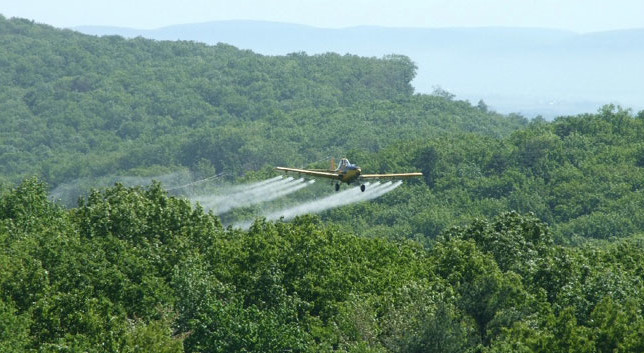In a nationwide referendum on the 2nd October 2016 Colombian voters rejected the government’s peace deal with the Revolutionary Armed Forces of Colombia, the largest extreme-left guerrilla movement FARC (The Revolutionary Armed Forces of Colombia – People’s Army).

By Elena Sharoykina
Negotiations, preceding the signing of the deal, took four years and were seen as a hope to end half-a-century of civil war, that has taken more than 250 thousand human lives.
The negative results of the referendum with a narrow margin of 0,5 % were completely unexpected and hit the position of the peacemaker president Juan Manuel Santos Calderón. In the last few years he has invested all of his political capital in negotiations with the rebels, despite the lukewarm attitude of the White House towards the peace agreement.
For decades Colombia has been a ‘battlefield’ where the U.S.A has tried to restrain the anti-U.S. tendencies in South America. Washington has been fighting the ideas of neo-marxism, guevarism and the Liberation theology, which inspired the FARC rebels, as well as other left-wing factions. However, it’s not widely known that in the jungles of Colombia there is another war front – the ecological one.
The U.S.A and Colombian governments accuse the rebels of illegal coca production and under cover of the so-called ‘anti-narcotic war’ spray the jungle from the air with glyphosate herbicide. This pesticide is mainly made by the US corporation Monsanto and is widely known under the trademark Roundup. Once it reaches the ground, it destroys not only the coca, but many other plants as well.
The use of glyphosate in the war against the partisans began in the 1980s. And in 1999, after the signing of anti-drug agreements between Washington and Bogota known as ‘Plan Colombia’, this war method acquired an official status.
According to these agreements, the U.S.A government pledged to fund the purchase of pesticide from Monsanto, to supply the project with specially equipped aircrafts and also to train and arm Colombian commandos in order to protect the aircraft from possible ground fire.
This is what FARC leader Timoleón Jiménez (real name is Rodrigo Londoño Echeverri), known as ‘Timochenko’ among partisans (by the way, he is a graduate of the Peoples’ Friendship University in Russia and is a trained doctor), says in his interview to Colombian newspaper VOZ:
“In the regions, where farm communities live close to coca crops, the government accuses landowners of illegal coca production and using this excuse constantly air-sprays their fields with glyphosate. This chemical destroys coca randomly along with other agricultural crops, causing irretrievable harm to animals and people, especially to children, seniors and pregnant women.”
The partisans try to shoot down U.S. crop duster aircraft loaded with chemical death. To escape the fire pilots go higher and the glyphosate crop dusting becomes even less precisely aimed.
Colombia is the only country in the world where the use of glyphosate happens in such a barbaric style. Millions of liters of toxic herbicide are sprayed over ‘the lungs of the planet’, which is how they often call tropical rain forests in South America. The country holds one of the first positions in the world for biodiversity. It is here that almost 10% of all endemic plant species grow.
More than 6 million Colombians were forced to leave their homes in the areas affected by glyphosate. It is comparable to the number of refugees from Syrian conflict areas, but Colombia draws considerably less attention from the western mass media.
The number of diseases, affecting local populations, grows progressively, cancer and birth defects among them. Soil loses its fertility, forests are being eradicated and water is being polluted.
This makes me think about the Vietnam War, when the Pentagon also widely used Agent Orange herbicide as a weapon against rebels, and it was also produced by Monsanto. Around 3 million people suffered illnesses caused by Agent Orange, half a million of them died. The consequences of Agent Orange use are still to be seen in the new generations of Vietnamese children through various inherited diseases.
The land abandoned by Colombians, because they can’t be used anymore for traditional agriculture, are inhabited by biotech corporations to expand their genetically-modified crop empires, which are resistant to glyphosate.
Monsanto has received a carte blanche from the Colombian government to sell their GM seeds in the country. It means that these GM crops will be also consumed by humans and animals. The war against Colombian guerrillas has hugely assisted the expansion of GM technology in the country.
In March 2015 the World Health Organization’s International Agency for Research on Cancer (IARC) assigned glyphosate to the group of major risk agents probably causing human cancer (group 2A). IARC reports that glyphosate is able to penetrate human cells and to damage DNA and chromosomes.
In May 2015 the National Drug Council of Colombia decided to ‘suspend the use of glyphosate spraying as a method to combat drugs’. This moratorium was demanded by FARC representatives at peace talks in Havana. The IARC report was a good excuse for the peacemaker President Santos to make a compromise with rebels.
Despite the support of the head of the government, the glyphosate moratorium was criticized by the Colombian ‘war faction’ and its U.S. bosses. Juan Carlos Pinzón Bueno, the defense minister, Álvaro Uribe Vélez, the former head of the government, and Kevin Whitaker, the U.S. ambassador in Bogota, have publicly opposed it. They claimed it an undeserved concession for FARC and appealed to continue the aerial spraying of the herbicide‘for the sake of combating narcotics’».
Of course, it’s not only about coca plantations. The U.S. uses the anti-narcotic campaign in Colombia as an easy excuse to eradicate FARC. Washington is usually surprisingly tolerant to drug production, when it brings profit.
Let’s take Afghanistan as an example. According to the United Nations Office on Drugs and Crime, the country became the world’s largest heroin producer right after it had been occupied by American and NATO forces.
Russia repeatedly suggested to start a joint war against opium poppy production in Afghanistan. But official U.S. and NATO representatives declined this proposal, because, in their opinion, it might push local peasants to join Muslim factions and to create an additional threat. No wonder Monsanto’s planes never showed up in the skies above Afghanistan.
Let’s appraise the situation soberly. Nowadays, the estimated number of active FARC members hardly exceeds 5-6 thousand people. It’s naive to think that several thousand of rebels trapped in jungle can control a transnational joint venture known as the ‘Colombian cocaine industry’, worth tens of billions U.S. dollars.
It’s not only left-wing partisans who are involved in the drug industry, there are also extreme right ‘death squads’ covered by the government, and other militant forces, they all form the core of mighty drug cartels. Hordes of corrupted bureaucrats, bankers, law enforcement officers feed on them.
It is remarkable, that the FARC leader Timochenko in his article ‘About Glyphosate: powerful chemical weapon of transnational power’ linked the Pentagon and Monsanto hostilities in the region with ‘the Colombian money-laundering empire’.
‘Glyphosate’ and ‘war’ have become synonyms now in Colombia. That is why the moratorium on the aerial spraying of the herbicide wouldn’t last long. Already in April 2016 the Colombian government under U.S. pressure and on the pretext of fighting the drug business resumed the use of glyphosate.
The Pentagon’s planes spraying Monsanto herbicide came back to the Colombian skies and became the Storm crows, foreboding trouble to the peace talks. The referendum failure in October 2016, could be the start of a true storm for Colombia.
Author
Elena Sharoykina is a Russian journalist and environmental activist. She is director of the National Association for Genetic Safety (Moscow), coordinator for the international “FACTOR GMO” study, director of the Russian TV-Channel “Tzargrad“.
Her articles and comments on GM-technologies, global biotech companies and their connections with the military-industrial complex, as well as on other ecology-related issues, regularly appear in Russian and international press.
As long as it rains with glyphosate over Colombian forests, there is no peace to be expected in the country.
















Hi Elena,
Keep up the good work!
Your pages need a Tweet button so that we can easily recommend them to others.
Take care, Michael.
Elena, thank you. Thanks also to the people of Sustainable Pulse to whom I donate cash.